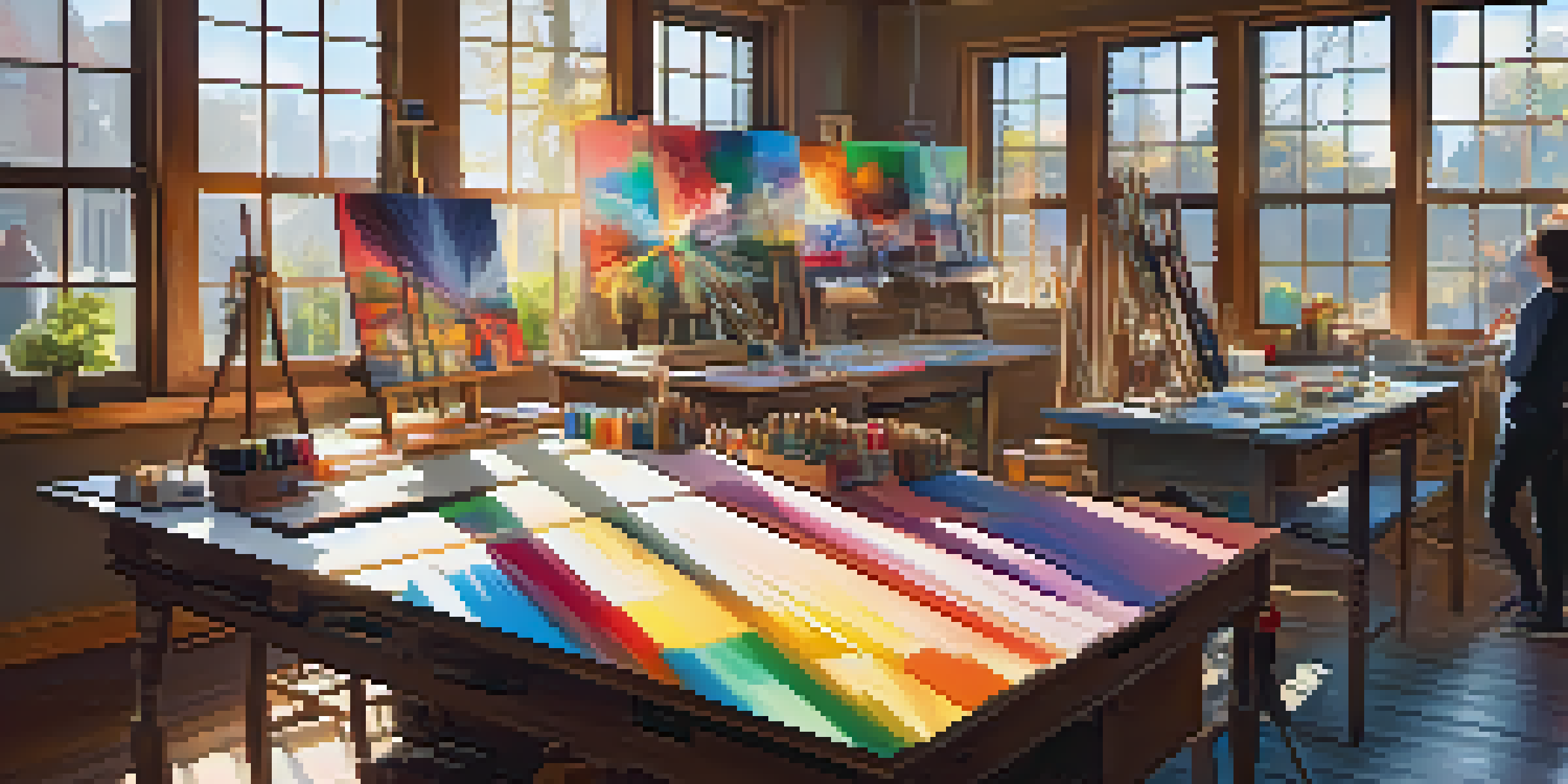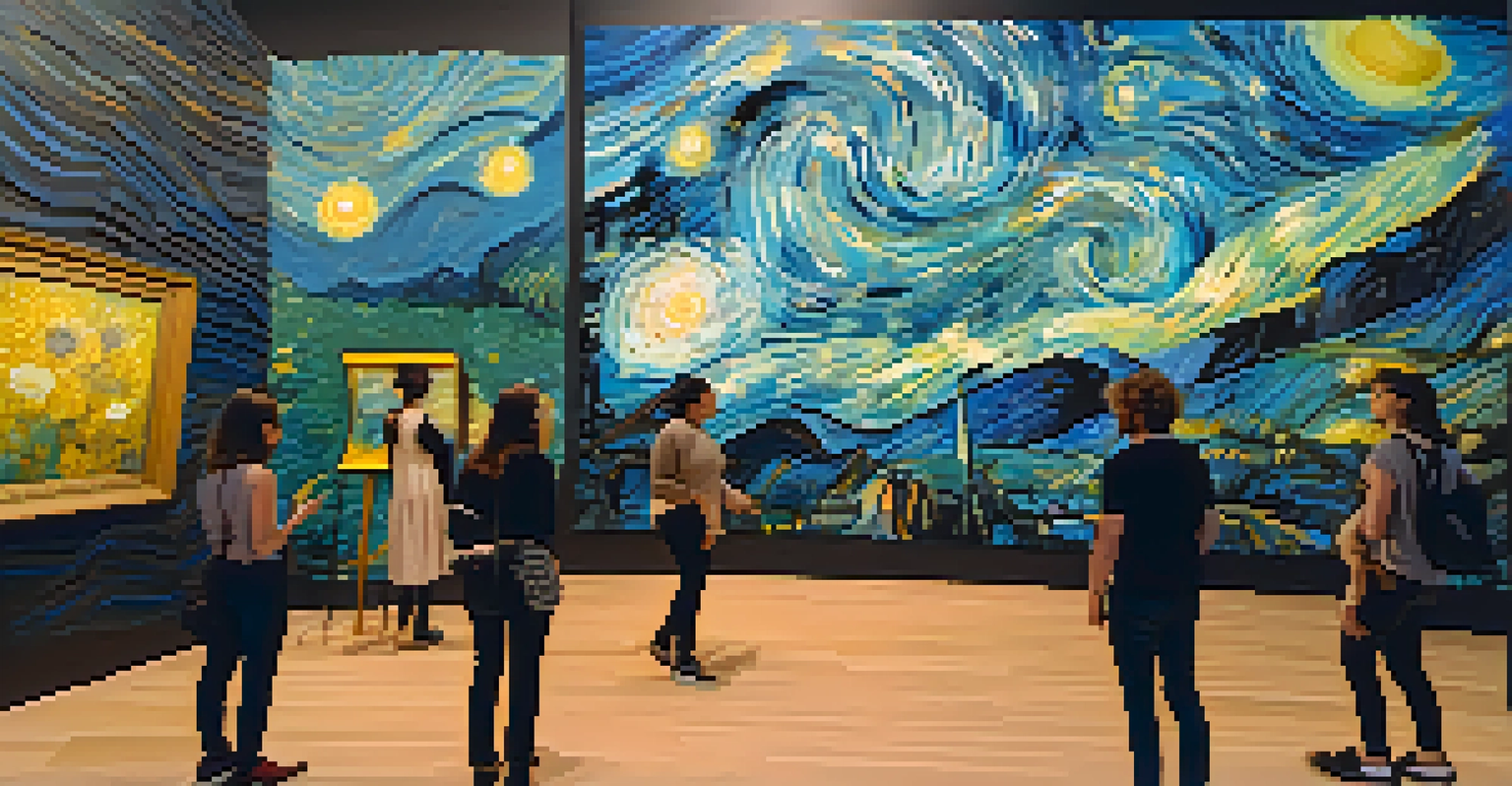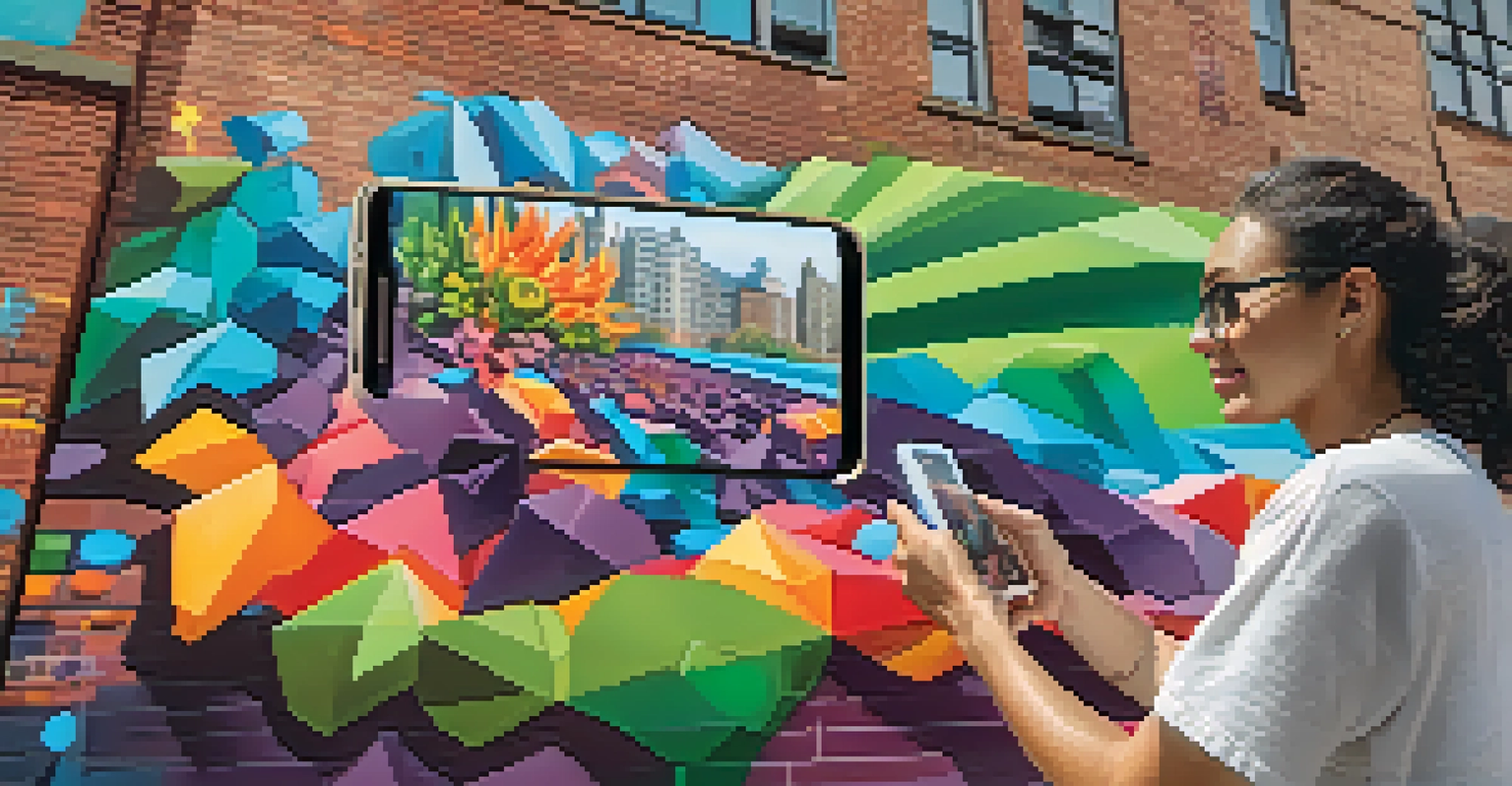The Impact of Technology on Art Across Different Cultures

Introduction: The Intersection of Technology and Art
Art and technology have been intertwined throughout history, influencing each other in profound ways. From the invention of the wheel to digital painting apps, each technological advancement opens new avenues for artistic expression. Understanding this relationship allows us to appreciate how different cultures adapt and incorporate technology into their artistic practices.
Art is not a mirror held up to reality, but a hammer with which to shape it.
For instance, ancient civilizations, such as the Egyptians, utilized tools like chisels and paints to create intricate hieroglyphics on their monuments. Fast forward to today, where artists can use 3D printing to create sculptures that would be impossible by hand. This evolution showcases how technology can both preserve and redefine artistic traditions.
Related Resource
As we delve deeper into this topic, we’ll explore specific examples of how various cultures have embraced technology, shaping their art forms and pushing creative boundaries.
Digital Art: A Global Movement
The rise of digital art has revolutionized how artists create and share their work. Artists from diverse backgrounds can now access software and tools that were once limited to those who could afford traditional materials. This democratization of art-making allows for a more inclusive artistic community.

For example, platforms like Instagram and DeviantArt have enabled artists from all over the world to showcase their work, regardless of geographical limitations. This exposure fosters cross-cultural collaboration and inspiration, as artists share techniques and ideas instantaneously. It’s fascinating to see how a digital painting from a young artist in Brazil can inspire a muralist in France.
Art's Evolution with Technology
The integration of technology has transformed artistic practices, enabling new forms of expression and collaboration across cultures.
This global movement not only highlights the creativity of individuals but also reflects the cultural narratives and stories that shape their art. As we continue, let’s look at how technology has transformed the way we experience art in public spaces.
Virtual Reality: Immersive Artistic Experiences
Virtual reality (VR) is taking the art world by storm, allowing audiences to step inside a piece of art. This technology offers an immersive experience that traditional galleries cannot replicate. For example, platforms like Oculus have enabled artists to create entire virtual exhibitions that viewers can explore from the comfort of their homes.
Technology is best when it brings people together.
One notable project is 'The Night Cafe,' a VR experience that brings Vincent van Gogh's paintings to life, allowing users to walk through and interact with his iconic works. Such experiences challenge our perceptions of art and encourage us to engage with it on a deeper level. They also make art more accessible to those who may not be able to visit physical galleries.
Related Resource
As we explore further, it’s essential to consider how these immersive experiences impact cultural representation and artistic authenticity.
Social Media: Redefining Art Consumption
Social media platforms have drastically altered how we consume art and connect with artists. Artists can now share their work instantly, gaining feedback and recognition in real-time. This immediacy has created a vibrant online art community where creativity thrives and evolves rapidly.
Take, for instance, the hashtag #ArtChallenge, which encourages artists to create within specific themes or constraints. This collective creativity not only fosters collaboration but also highlights diverse cultural interpretations of art. A challenge originating in one culture can inspire artists around the globe, enriching the overall artistic landscape.
Digital Platforms Foster Inclusivity
Social media and digital art platforms have democratized art-making, allowing diverse voices to share their work globally.
However, this shift also raises questions about the commercialization of art and the pressure artists may feel to produce content continually. As we move forward, let’s examine how technology influences traditional art forms and cultural heritage.
Technology's Role in Preserving Cultural Heritage
Technology plays a crucial role in preserving and promoting cultural heritage through art. Digital archiving, for example, allows museums and cultural institutions to document and share artifacts that may be at risk of deterioration. This preservation effort ensures that future generations can appreciate and learn from their cultural history.
Initiatives like the Google Arts & Culture project give users virtual access to collections from around the world, allowing them to explore diverse artistic traditions from their devices. This accessibility fosters a deeper understanding of cultural contexts and highlights the importance of preserving these narratives.
Related Resource
However, the challenge lies in balancing technological preservation with authentic cultural representation. Let’s explore how different cultures navigate this complex relationship.
Art and Technology: A Tool for Social Change
Artists increasingly use technology as a tool for social change, addressing critical issues through their work. From using social media to raise awareness about climate change to creating interactive installations that engage the public, technology amplifies artists' voices. This trend is particularly powerful in marginalized communities where traditional avenues of expression may be limited.
For example, street artists have utilized augmented reality to create pieces that come to life through smartphone apps, allowing viewers to engage with social messages in innovative ways. This fusion of art and technology not only captivates audiences but also sparks conversations around pressing societal issues.
VR Enhances Art Engagement
Virtual reality provides immersive experiences that challenge traditional perceptions of art, making it more accessible to wider audiences.
As we conclude our exploration, let’s reflect on the future of art and technology and the possibilities that lie ahead.
Conclusion: The Future of Art in a Technological World
As technology continues to evolve, so too will the landscape of art across cultures. The integration of new tools and platforms creates exciting opportunities for artists to explore and redefine their practices. From digital installations to VR experiences, the future promises a rich tapestry of artistic expression that transcends borders.
Moreover, the ongoing dialogue about technology's role in art encourages us to consider the ethical implications of these advancements. How do we ensure that technology serves as an inclusive platform for all artists? This question is vital as we navigate the complexities of cultural representation in an increasingly interconnected world.

In conclusion, the impact of technology on art is a dynamic and evolving narrative that reflects our collective human experience. By embracing these changes, we can celebrate the diversity of artistic expression and the stories that shape our global culture.